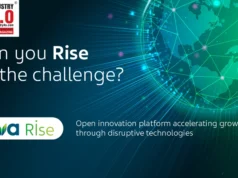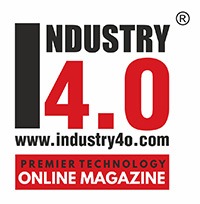How Industry 4.0 and Unified Namespace (UNS) are revolutionizing Business Strategy
As digital transformation continues to reshape industries, the convergence of technology and industry has given rise to Industry 4.0 – a new era where advanced systems like the Unified Namespace (UNS) are driving unprecedented efficiency and innovation. But what does this mean for today’s business leaders? How can organizations leverage these advancements to secure a competitive advantage?
In this article, we delve into the strategic implications of Industry 4.0 and UNS, offering actionable insights and real-world examples to guide executives in navigating this complex landscape.
The strategic impact of Industry 4.0
Industry 4.0 represents more than a technological shift; it signifies a fundamental change in how businesses operate and compete. The integration of digital technologies into manufacturing processes enables real-time decision-making, predictive analytics, and seamless communication across the supply chain. This evolution is not just operational—it is profoundly strategic.
Example: Tesla’s real-time supply chain management
Tesla’s real-time monitoring of its supply chain offers a clear competitive advantage. By precisely tracking how many windshields a supplier like Saint-Gobain can deliver at any moment, Tesla can dynamically adjust its production schedules. This level of agility minimizes downtime and enhances customer satisfaction through timely deliveries.
For business leaders, the takeaway is evident: embracing Industry 4.0 and dismantling silos enables a responsiveness and precision that traditional manufacturing processes cannot match.
Unified Namespace: The cornerstone of Digital Transformation
At the heart of modern Industry 4.0 lies the concept of a Single Source of Truth (SSoT), the foundational principle of Unified Namespace (UNS). UNS is neither a software, nor an architecture; it is a unified, real-time data principle that ensures all parts of an organization – from the factory floor to the executive suite, across multiple sites – are working from the exact same real-time data set. This eliminates the inefficiencies of duplicated Excel files and disparate databases.
Example: SOMFY’s real-time supplier selection
SOMFY’s ability to produce electric motors every second while optimizing costs is possible through instantaneous supplier selection, with real-time data diving automated decisions 24/7. By accessing constantly updated data, SOMFY can select suppliers based on the current price of copper, maximizing margins and maintaining a competitive edge.
Overcoming the failure of Top-Down approaches
One critical issue in implementing Industry 4.0 initiatives is the reliance on Top-Down strategies, which have a documented failure rate exceeding 90%. The complexity of modern production environments—characterized by a mix of legacy systems, slow point-to-point communication, and varied processes—renders Top-Down initiatives largely ineffective.
Illustration 1: Traditional factories are often structured like a pyramid, with multiple layers operating in silos. This is known as the Purdue Reference Model for Computer-Integrated Manufacturing (CIM), based on the ISA-95 standard. The Unified Namespace (UNS) disrupts this model by enabling seamless, (1) real-time data flow, (2) secure remote access, and (3) scalability on a massive level.

The Solution: The Power of Bottom-Up transformation
The true potential of Industry 4.0 doesn’t lie in top-down directives or technology alone, but from the operational level, where frontline workers hold invaluable process knowledge and firsthand insights into daily challenges. Machine operators, assembly line staff, quality inspectors, and team leaders are uniquely positioned to drive meaningful digital transformation. By empowering these individuals to identify and implement improvements, organizations achieve faster ROI and more sustainable outcomes.
Organizations that empower frontline workers to lead change, supported by the right digital tools, consistently achieve return on investment (ROI) within 3 to 9 months. By taking a ground-up approach, these companies ensure that technology adoption aligns directly with operational realities, driving more impactful and sustainable results.
The broader strategic implications
While the technical benefits of UNS are evident, the broader strategic implications are even more significant. Many companies fail in their transformation efforts because they focus too narrowly on the technology itself, rather than integrating it into a comprehensive vision that addresses people, processes, and technology.
UNS is not an end goal, it is a compulsory element, part of the journey.
Another reason companies struggle with their transformation is that they often don’t grasp the intricacies of UNS until they reach a certain level of maturity, typically after 12 to 24 months. By then, it’s often too late, and the organization is forced to address technical debt, requiring additional budget and resources for rework and justification.
To prevent project failure, it is crucial to adhere to proven project management best practices focused on Change Management and, most importantly, engage an exceptional project director with a track record of success. With only 6 to 11% of digital transformations fully succeeding, we are fighting against the odds. Achieving excellence is exponentially more difficult than simply being very good. To overcome this challenge, you need a leader who not only excels in execution but also thinks outside the box, capable of navigating complexities that others cannot.
Illustration 2: Although many companies consider themselves to have transitioned to Industry 4.0, more than 90% are still falling short, largely due to a lack of understanding around the Unified Namespace (UNS). By incorporating cutting-edge technologies like event-driven and edge-driven architectures, organizations can unlock substantial new capabilities. Much like how connecting a smartphone to the internet unlocks limitless applications, these innovations expand operational possibilities and enhance agility across industrial ecosystems.

UNS does more than streamline operations; it lays the foundation for innovation, enabling companies to pivot quickly in response to market changes, customer demands, or unforeseen events such as pandemics, supply chain disruptions, and energy crises.
Broaden the perspective: Cross-industry application.
From EuroTunnel’s use of UNS for real-time accident analysis to Renault’s reduction in furnace temperatures to cut energy costs and emissions, saving up to €200 million a year; the potential applications of UNS are vast. These examples demonstrate how UNS can drive not only operational efficiency but also strategic outcomes like sustainability and risk management.
Actionable steps for business leaders
1. Start with a clear Vision:
Before implementing UNS, define your company’s strategic digital goals. Whether your objective is cost savings, faster time-to-market, enhanced customer experience, or data monetization, a clear vision will guide the implementation process.
2. Pilot projects with measurable outcomes:
The pioneering time of Proof of Concepts (PoC) is over. Now, it’s time for Proof of Values (PoV). Begin with small, manageable projects that allow you to test and refine the technology in 3 months, filtering out providers that do not deliver strong ROI.
For example, connect devices of two factories, and measure the reduction in downtime or increase in production efficiency. Use these early wins to build momentum and secure buy-in from stakeholders.
3. Adopt a Bottom-Up approach:
Engage frontline workers involved in day-to-day operations, leveraging their insights to drive the change. Build a team around them to implement the industry 4.0 technologies. This ensures that the technologies implemented are practical and immediately relevant, leading to greater success.
4. Break down silos with a Change manager:
UNS and Industry 4.0 require cross-functional collaboration. Ensure that IT, operations, quality, and management teams are aligned and working towards a common goal, potentially involving a restructuring of teams or the creation of new roles focused on digital integration.
5. Leverage external partner expertise:
The Golden-Triangle is now outdated for large-scale transformations. External partners can play a crucial role. Engaging with specialists can help you navigate the complexities of digital strategy implementation. It will become a Single point of Contact (SPOC), to encapsulate the complexities, from selecting the right integrators to understanding the latest protocols.
6. Continuous improvement and adaptation:
A Digital Transformation is an ongoing process, not a one-time project. Establish a culture of continuous improvement, where systems are regularly reviewed and optimized.
Conclusion: The Future of Industry 4.0
The promise of Industry 4.0 and UNS is immense, but realizing its full potential requires a strategic and thoughtful approach. Only 6 to 11% of the industry manage to fully transform. By understanding the broader business implications and taking actionable steps, companies can position themselves at the forefront of the next industrial revolution.
Call to Action
As a business leader, now is the time to “think big, act small, and adapt quickly”. Industry 4.0 and UNS are not just technologies – they’re strategic imperatives that will define the future of your organization. The question is not whether to embrace them, but how to quickly shift and stay ahead of the worldwide competition.
FactoVia can help you position your organization for unparalleled success in the digital age. Please reach us here: https://www.factovia.net/en/contact
More reading: Origin of UNS and technical characteristics
What is the origin of the UNS?
The concept of UNS has multiple origins, but one of the most notable contributors is Walker Reynolds, who formalized and popularized its architectural principles. Between 2003 and 2005, while working in a salt mine, Walker needed to take various measurements across numerous pieces of equipment. To simplify this task, he created several Excel files to monitor the equipment, linking them through a little-known Excel feature called Dynamic Data Exchange (DDE), thus creating a “Single Source of Truth.” To avoid confusion across different equipment, he implemented a hierarchical naming system that became the foundation of UNS.
Today, example of hierarchical data structure is presented by the ISA-95 standard (Part 2) and is found in systems like SAP’s ERPs or maintenance software. A typical hierarchy might be:
Company > Site > Production Line > Workstation > Equipment (such as a screwdriver or a sensor, Quality Control Sheet)
Over the years, the unification principle has been refined with more recent technologies. The OPC UA standard first enabled the implementation of UNS, followed by another standard called MQTT and its “Sparkplug” variant in 2014, designed by and for industries. These standards, now recognized as international (ISO/IEC 20237:2023), have gained prominence, especially after Hannover Messe, where industry players unveiled their UNS strategies.
What are the principles of UNS?
To understand the utility of UNS, let’s consider the example of adding a Stäubli TX60 robot arm in a factory, and explore a few key principles:
● Single Source of Truth (SSoT): A unique, near-real-time description of the entire production system, accessible to all stakeholders in the company.
● Birth and Death Certificates: When the Stäubli robotic arm is added to a production line, the entire IT ecosystem is immediately informed. Previously, each system had to constantly query whether new equipment had been added, which generated unnecessarily burden to the network. Now, the Stäubli’s birth certificate informs only the relevant parties, and only when needed, thanks to a “Report by Exception” mechanism (RBE).
● Self-Awareness architecture: A “drag and drop” principle applies here. By adding the robotic arm, the system automatically recognizes it as a TX60, complete with its full specifications. No complex error-prone reprogramming is needed; changes propagate instantly on a global scale, across all continents if applicable.
● Event-Driven: UNS follows an event-driven logic. For example, if the robotic arm exceeds its authorized load, a small, lightweight message is sent immediately. This technology, designed to withstand harsh industrial conditions, is robust and resource-efficient, offering high resilience against internet micro-outages.
Thus, UNS and MQTT Sparkplug, created for the industry and made robust over the years, are well-suited for the challenging conditions of the industry: lightweight, cost-effective messaging; resilience to internet micro-outages; significant time savings for adapting to unforeseen events; and heterogeneous management of exotic protocols.
About the Author:

Mr. Vincent Thavonekham
CEO
FactoVia, FRANCE.

Mr. Vincent Thavonekham with 24 years in the tech innovation sector, has worked with experts and executives globally to transition companies into the digital realm, focusing on Smart & Connected Factories, with Open Architectures state of mind.
Mr. Vincent Thavonekham volunteer worldwide, coaching startups and democratizing Industry 4.0 through his multi-award winning training material (a study spanning across +11,000 individuals made our pedagogy robust).
Mr. Vincent Thavonekham hold an Honors degree in Mechanical Engineering & Production, a Postgraduate Diploma, and a Master’s in IT specializing in AI.
Mr. Vincent Thavonekham actively participate in the Agile community, and delivering IT projects, holding Scrum, PRINCE2, and ITIL v3 certifications.
Since 2014, Mr. Vincent Thavonekham have consistently implemented Industry 4.0 and Cloud technologies.
In recognition of Mr. Vincent Thavonekham contributions, Microsoft has repeatedly awarded him the Azure/IoT MVP title and the prestigious “Microsoft Regional Director” Title ( given to only 200 individuals globally ).
Mr. Vincent Thavonekham is Accorded with the following Honors & Awards :
https://www.linkedin.com/in/th
Mr. Vincent Thavonekham is Voluentering in the following International
Industry Associations & Institutions :
https://www.linkedin.com/in/th
Mr. Vincent Thavonekham can be contacted at:
About FactoVia :

FactoVia support industrial companies through every stage of their Industry 4.0 digital transformation, from auditing to implementing innovative solutions, while promoting environmentally-friendly industrial production. This includes training in Industry 4.0 with an immersive approach inspired by modern pedagogies.
FactoVia ia a Pioneer in Unified Name Space (UNS) & IIoT, dedicated to helping industries optimize their real-time connected factories.
FactoVia can be contacted at :











